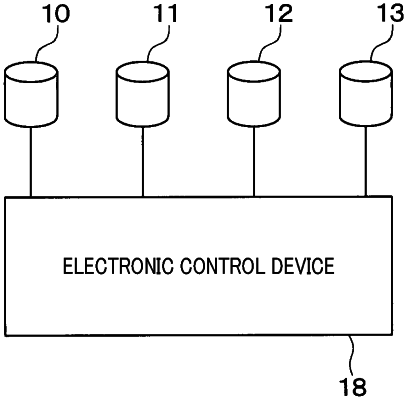| CPC G01S 15/931 (2013.01) [G01S 2015/932 (2013.01)] | 23 Claims |

|
1. A three-dimensional object detection device that detects a corner of a three-dimensional object to be detected, comprising:
a transmitter that transmits a search wave;
a first receiver that receives a reflected wave that is part of the search wave from the transmitter reflected off the corner as a spherical wave;
a second receiver that is located at a position different from a position of the first receiver and receives the reflected wave;
a first path-length calculator that determines a first path length, which is a length of a path along which the search wave propagates after being transmitted from the transmitter until the reflected wave is received by the first receiver;
a first ellipse calculator that uses a position of the transmitter and the position of the first receiver as focal points to find a first ellipse defined by a set of points whose distances from the transmitter and the first receiver add up to the first path length;
a second path-length calculator that determines a second path length, which is a length of a path along which the search wave propagates after being transmitted from the transmitter until the reflected wave is received by the second receiver;
a second ellipse calculator that uses the position of the transmitter and the position of the second receiver as focal points to find a second ellipse defined by a set of points whose distances from the transmitter and the second receiver add up to the second path length; and
a corner calculator that finds an intersection point between the first and second ellipses as the corner.
|